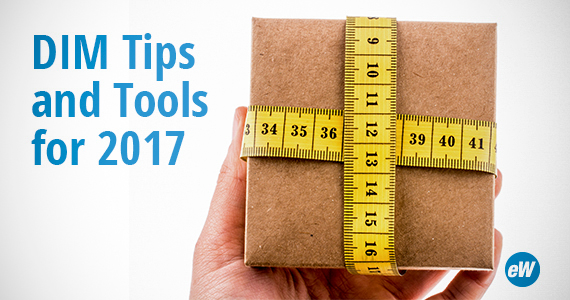Different carriers calculate dimensional (DIM) weight according to their own specifications. This means that customers need to manage different formulas and evaluate base shipping rates when comparing costs between carriers.
(As a reminder – DIM weight takes into account both physical size and weight of a package, plus the amount of space the package would take up in the truck. This means, for example, a heavy but flat package will likely cost less to ship than a light yet oversized box, because the smaller package uses less carrier space.)
Fortunately for customers who use multiple carriers, a new tool has made calculating and comparing dimensional weight easier. Not only does the new DIM Weight Calculator & Pricing Tool calculate the DIM weight of a parcel using recent formula changes from both FedEx and UPS, but it also displays base shipping rates for both carriers so users can view the data on a single page.
Here’s a brief look at the various tools e-commerce shippers can use to determine the best prices for DIM weight.
USPS
For packages exceeding 1 cubic foot, USPS uses the volume (length x width x height) vs. weight. Note that all Flat Rate (Priority and Express) boxes are exempt from DIM weight pricing, as are packages exceeding 70 pounds. For a more detailed look at USPS DIM calculations and pricing, click here and here.
FedEx & UPS
This new online tool from RedStag Fulfillment allows users to plug in dimensions and instantly view the per-zone charges for both FedEx and UPS.
Historically, UPS and FedEx have offered slightly lower pricing for larger packages delivered to businesses, while USPS’s prices are lower for smaller packages going to residences. However, all carriers have niche package weight groups that may be to your benefit as a seller, so it always pays to comparison-shop.
The Bottom Line
With online tools, it’s easier than ever to calculate DIM charges and evaluate your options. No matter which carrier you choose, you can work to reduce DIM costs by following a few simple rules of thumb. Choosing a just-right size box will help cut down on additional DIM pricing, as will using envelopes vs. boxes whenever possible. Also, check your carrier agreement to see if it’s possible to eliminate DIM charges altogether if you routinely ship bulky or oversized items.






